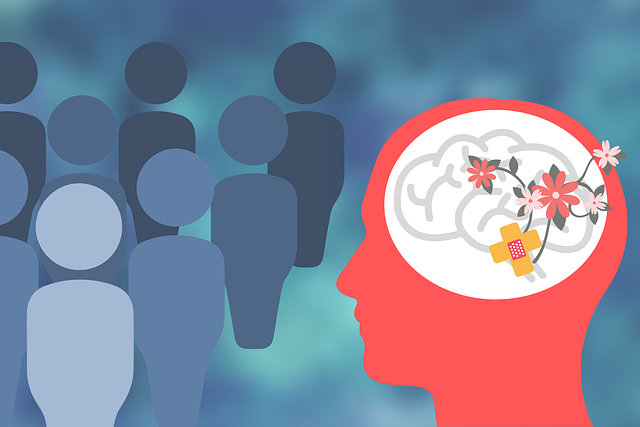Trauma-Informed Care: What’s All the Fuss About?

by Laura J. Clark
It seems that everywhere you look these days, there is a conversation about trauma-informed care. With more people learning about this important body of work, the implications for how we live and work together become increasingly clear. But what is this work all about?
What is Trauma?
For many people, trauma is what happens with life-altering events like accidents, natural disasters, war, or horrific abuse. All of these events are without a doubt traumatic to those who experience them and are learning to cope in the aftermath. But there can be other things that cause the body to move into survival mode.
Dr. Dan Siegel, a clinical professor of psychiatry at the UCLA School of Medicine, defines trauma as “an experience that overwhelms a person’s ability to cope” (NICABM, 2019). This definition creates a better understanding of how things that seem less dramatic can cause the body to move into the same survival space because a person’s experience has surpassed their ability to cope and likely does not have the ability to process completely to reach a resolution.
Why Does it Matter?
It is the unresolved experience, whether others recognize it as life-altering or not, that continues to live in the mind and body. It influences how we experience the world.
Think for a moment of your favorite smell, the one that immediately transports you to another place and time. Maybe it is your mother’s perfume or your favorite food baking in the oven that brings you to a place of joy.
We have each lived our own life, however, and things that are delightful to our senses may bring someone who has lived a different life to a much different place. Perhaps your mother’s perfume was worn by someone who harmed them or your favorite food reminds them of something they lost long ago.
It is hard to remember that everything we encounter has been tagged by our past experiences as a predictor of whether what comes after is good or bad. If it is good, our body prepares to relax and enjoy. However, if it’s bad, our body begins its most important task—protecting from harm and avoiding danger by using what is often referred to as the flight, fight, or freeze response. A person may run away, tantrum, fight, become silent, or even faint to try to return to safety.
It does not matter if the threat is real or perceived. If the brain is making a prediction based on all its past experiences that what comes next is a threat, the body will engage in behaviors to keep the person safe or to get them to safety.
Doesn’t All of This Belong with Mental Health Professionals?
Working with an individual to address the sources of trauma in their life and its long-reaching impacts absolutely belongs in a professional therapeutic counseling relationship. Being trauma-informed does not prepare someone to handle these kinds of issues any more than learning CPR prepares someone to do open heart surgery.
Becoming trauma-informed provides a framework to help individuals learn how the brain and body work, how past experiences influence our understanding of the world, and what we can do to have more compassion with one another. It also helps us learn how not to make things worse for someone who is struggling to feel safe and connected in a situation.
How Can the Impact of Trauma be Mitigated?
Having the ability to work through the difficulties in life is the key to overcoming trauma and its impacts. Building resilience can happen across the lifespan and can begin at any stage of life. Resilience is taught and modeled by healthy adults and can also be shared in the community. Connecting with external support, building internal personal strength, and growing social and interpersonal skills are the required components of resilience. All three components are necessary. (Grotberg, 1995)
What Can I Do?
Becoming trauma-informed is a terrific first step in helping individuals who have had their lives impacted by situations that have overwhelmed their ability to cope. Learning to bring calm into challenging interactions is a valuable skill that helps everyone get things done more effectively. Creating spaces where people feel like they can be safe and connected allows for a sense of belonging to develop. These are skills that take both practice and intention. But in the long run, they help us create a world that is more compassionate and offers hope to others.
To learn more about becoming a trauma-informed individual, please visit the Community Resilience Initiative. Their webpage links to training resources as well as other research and communities of learning.
References
Grotberg, E. (1995). A guide to promoting resilience in children: Strengthening the human spirit. The Hague: Bernard van Leer Foundation.
NICABM: National Institute for the Clinical Application of Behavioral Medicine. (2019, August 2). Why trauma affects some people more than others, with Dan Siegel. YouTube. https://www.youtube.com/watch?v=yb4dgkk0kEk
 Laura J. Clark serves as the Assistant Vice Chancellor for Student Success and Professional Development and the Executive Director of Virginia’s Community Colleges Student Success Center. Her 20 years in higher education have focused on helping students meet their goals and equipping other higher education professionals to do the same. She has worked with international, under-resourced, and historically marginalized student populations. She is a fearless advocate for creating welcoming campuses and classrooms where everyone can chase their dreams. She has equipped almost 1,800 higher education professionals to be trauma-informed individuals as a certified trainer with Community Resilience Initiative. Laura is a first-generation college student who earned a bachelor of science in psychology from Virginia Polytechnic Institute and State University and a master of science in counseling and human development with a specialization in student affairs administration from Radford University.
Laura J. Clark serves as the Assistant Vice Chancellor for Student Success and Professional Development and the Executive Director of Virginia’s Community Colleges Student Success Center. Her 20 years in higher education have focused on helping students meet their goals and equipping other higher education professionals to do the same. She has worked with international, under-resourced, and historically marginalized student populations. She is a fearless advocate for creating welcoming campuses and classrooms where everyone can chase their dreams. She has equipped almost 1,800 higher education professionals to be trauma-informed individuals as a certified trainer with Community Resilience Initiative. Laura is a first-generation college student who earned a bachelor of science in psychology from Virginia Polytechnic Institute and State University and a master of science in counseling and human development with a specialization in student affairs administration from Radford University.